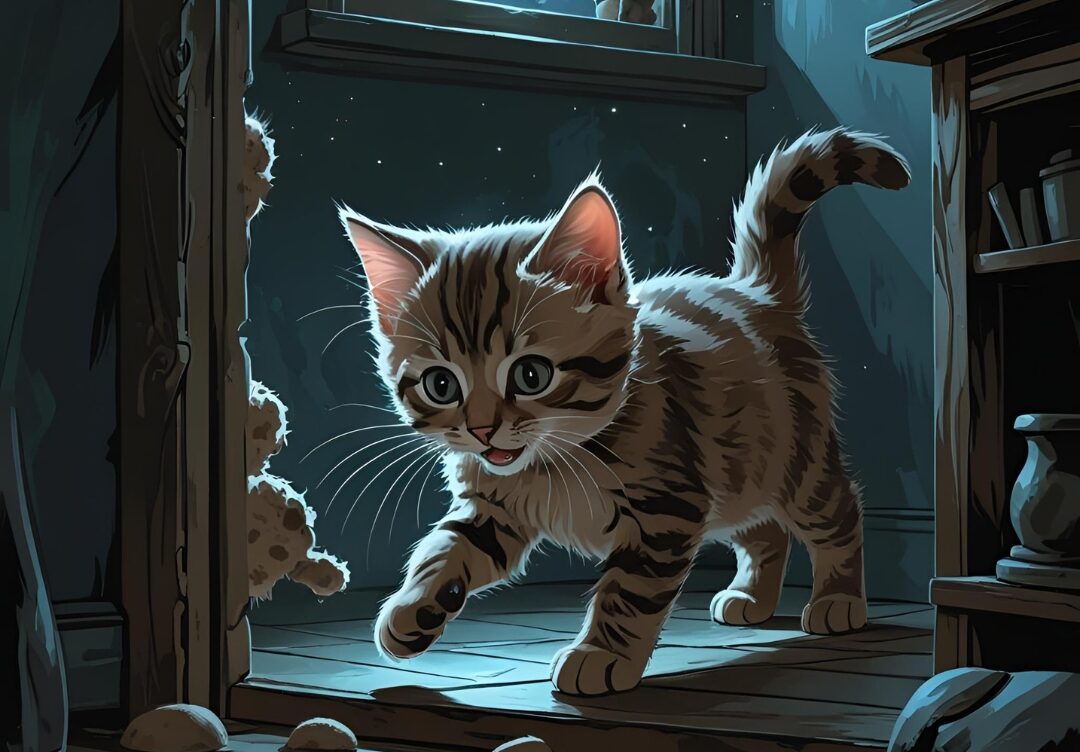
Can Cats See in the Dark? The Truth About Feline Night Vision
Cats are known for their mysterious nighttime antics — gracefully navigating a room without bumping into furniture or chasing a shadow across the floor. But have you ever asked yourself, can cats see in the dark? Is it some superpower, or just biology at work?
The science behind cat vision, debunk myths, and share how their eyes work differently from ours — especially when the lights go out.

How Does a Cat’s Vision Work?
To understand whether cats can see in the dark, we first need to break down how their eyes function.
Cats, like many nocturnal animals, have evolved to see well in low-light environments, not complete darkness. Their eyes are structured to maximize every bit of light — thanks to some fascinating biological features:
Larger Corneas and Pupils
Compared to human eyes, cats have much larger corneas and pupils relative to their eye size. This allows light to enter the eye, improving vision in dim conditions.
More Rods Than Cones
The retina contains two types of photoreceptor cells: rods (for low light) and cones (for color and detail). Cats have 6–8 times more rods than humans, giving them exceptional motion detection and night vision.
The Tapetum Lucidum: Nature’s Reflector
Cats also have a tapetum lucidum, a reflective layer behind the retina. These bounce light back through the retina, giving their eyes that eerie glow in the dark — and a second chance to absorb light.
So, Can Cats See in Complete Darkness?
Here’s the short answer: No, cats can’t see in total darkness. Just like us, if there’s zero light, they’re essentially blind. But in low-light situations — like dusk, dawn, or a dimly lit room — cats see exceptionally well, far better than humans.
This explains why your cat seems perfectly confident during late-night zoomies while you’re fumbling for the light switch.
How Far Can Cats See in the Dark?
Cats excel at short- to mid-range vision, particularly in low-light conditions. However, they don’t see well up close (less than 6 inches) or at long distances. Their optimal vision range is about 6–20 feet, which is perfect for stalking prey — or for navigating your surroundings.
What Colors Can Cats See at Night?
While cats see well in dim light, their color perception is limited. They’re believed to be dichromatic, seeing mainly shades of blue and green and struggling with reds and pinks.
At night, the world looks even more muted and monochrome to them. However, with their sharp motion detection and heightened light sensitivity, they don’t require vibrant colors to find what they’re looking for.
FAQ: People Also Ask
Can cats see better than humans in the dark?
Absolutely. Cats require only about one-sixth of the light that humans need to see. Thanks to their rod-heavy retinas and reflective tapetum, they excel in low-light conditions.
Do cats have night vision like infrared?
No, cats don’t have infrared or thermal vision. They rely solely on enhanced low-light vision, not heat detection.
Why do my cat’s eyes glow at night?
That glowing effect is caused by the tapetum lucidum reflecting light out of the eye. It’s not just spooky — it’s functional.
Should I leave a light on for my cat at night?
Not necessary in most cases. Unless your cat is elderly or visually impaired, it likely sees just fine in the dark corners of your home.
Fun Fact: Why Are Cats More Active at Night?
Cats are crepuscular, meaning they’re most active during dawn and dusk. Their vision is tailored for these times when their natural prey — like mice or birds — is also on the move.
This is why your kitty might seem like a sleepy loaf all day, then suddenly turn into a pouncing predator at 5 a.m.
Tips for Supporting Your Cat’s Vision
Even though cats are built for low light, that doesn’t mean their eyes are invincible. Here’s how to keep them healthy:
- Regular vet visits to check for age-related vision problems
- Keep surroundings familiar, especially for older cats
- Avoid sudden light changes that could strain their eyes
- Use nightlights near litter boxes or feeding areas for senior cats
